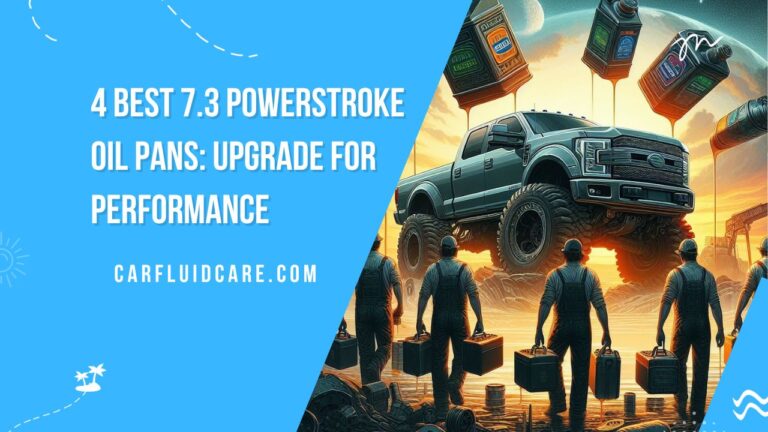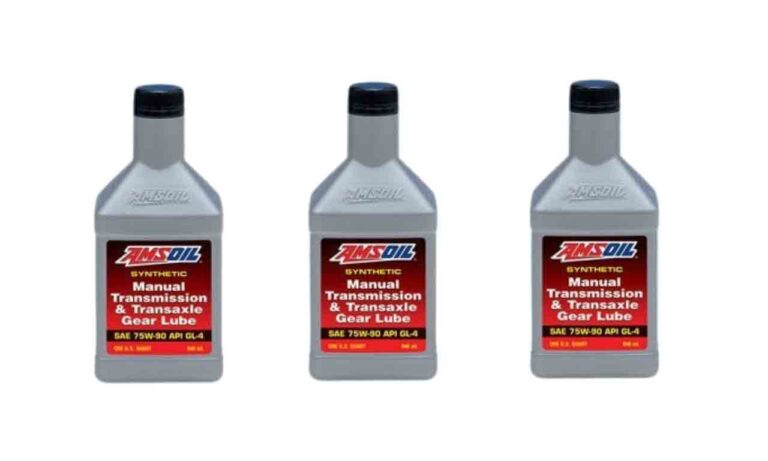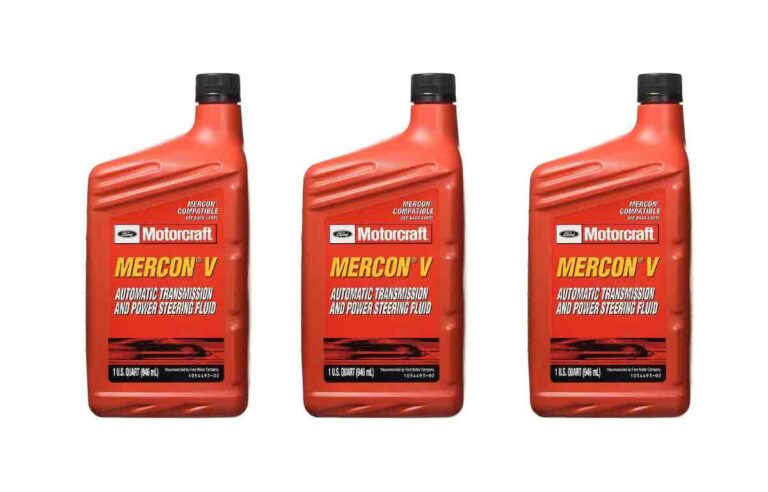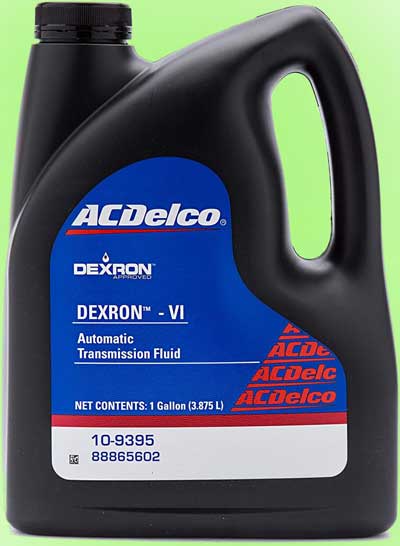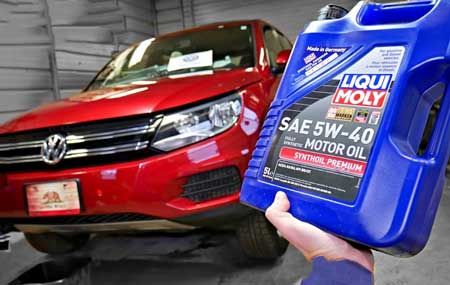4 Best 110v Fuel Transfer Pumps | Easy & Efficient Refueling
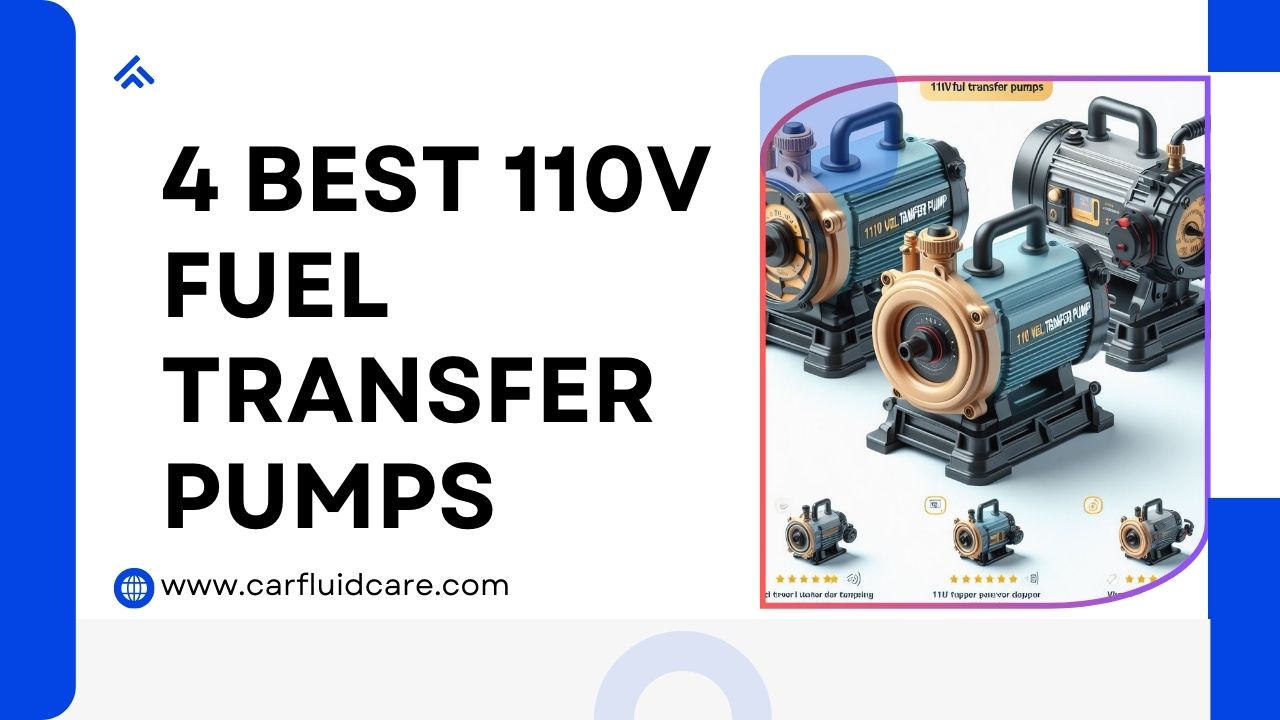
Struggling with manual fuel transfers? Ditch the hassle and discover the convenience of 110v fuel transfer pumps. These powerful tools offer a safe and efficient solution for transferring fuel across various applications, from refilling off-road vehicles to managing storage tanks.
Choosing the best 110v fuel transfer pump requires considering key factors like flow rates, compatibility with specific fuel types, safety features, and portability.
We’ll explore top contenders in the market, highlighting their strengths and functionalities, ensuring you make an informed decision. So, say goodbye to messy funnels and embrace a streamlined fuel transfer experience.
Best 110v Fuel Transfer Pump in 2024
Discover the unparalleled efficiency and convenience of the Best 110v Fuel Transfer Pump. Designed for optimal performance, this cutting-edge pump ensures seamless fuel transfer.
Here is the list of best 110v fuel transfer pump:
| Feature | Biltek 110V | BLACKHORSE | VEVOR Diesel | PRUNkuar 110V |
| Flow Rate | 60 L/min (16 GPM) | 20-60 L/min (5.25-15.75 GPM) | 10 GPM | 2.3-3.7 GPM |
| Speed Range | N/A | 2800 RPM | 3300 RPM | N/A |
| Motor Power | 110V AC | 110V AC, 550W | 110V AC | N/A |
| Construction | N/A | Cast iron and aluminum alloy | Steel, aluminum alloy | N/A |
| Self-Priming | No | Yes | Yes | No |
| Portability | Portable | Portable | Portable | Compact and lightweight |
| Price | Check Price | Check Price | Check Price | Check Price |
1. Biltek 110V Electric Fuel Transfer Pump
Fast and efficient fuel transfer for diesel vehicles and equipment. This Biltek pump boasts a powerful 110V motor delivering 60 L/min (16 GPM), making quick work of refueling trucks, tractors, generators, and more.
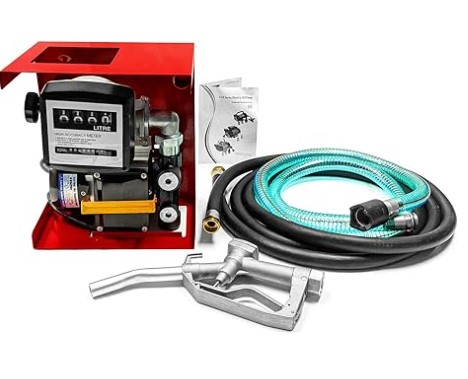
Features
- Built-In Fuel Meter: Keep precise track of the fuel pumped per job and monitor lifetime usage with the integrated fuel meter.
- High Flow Rate: With a remarkable flow rate of 60 Liters per Minute (16 Gallons per Minute), this pump gets the job done quickly and efficiently.
- Versatile Use: Compatible with a range of fuel types, including diesel fuel, biodiesel, kerosene, and light fuel oils. Not suitable for gasoline.
- Electric Powered: Operating on 110V, this electric pump provides consistent and reliable power for seamless fuel transfer.
- Complete Kit: Includes a fuel pump nozzle, suction hose, and a 13ft hose, ensuring you have everything you need for hassle-free fueling.
- Fuel Tracking: Built-in meter for monitoring fuel usage per job and lifetime tracking.
Benefits
- Time-Saving: Streamlines fuel transfers compared to manual methods.
- Accuracy: Meter provides precise fuel usage data.
- Versatility: Handles fueling of vehicles, generators, and farm equipment.
Technical Specifications:
- Pump Flow Rate:
- Range: 20-120 liters per minute / 5-30 gallons per minute
- Ensures a versatile flow rate catering to different fueling requirements.
- Voltage:
- 110V / 60Hz
- Operates efficiently on standard electrical power, suitable for a wide range of locations.
- Max Working Pressure:
- 44 PSI / 3 Bar
- Provides ample pressure for efficient fuel transfer without compromising safety.
- Power Consumption:
- 550 Watts
- Strikes a balance between powerful performance and energy efficiency.
- Outlet Hose Diameter:
- 3/4″ NPT
- Compatible with standard hose fittings, ensuring ease of use and compatibility with various fueling systems.
- Inlet Hose Diameter:
- 1″
- Facilitates a smooth intake of fuel, optimizing the pump’s performance.
- Precision:
- +/- 1%
- Offers high accuracy in fuel measurement, allowing for precise fuel management.
- Max Suction Length:
- 16.4 feet / 5 meters
- Provides flexibility in installation, allowing the pump to efficiently draw fuel from a distance.
Compatible with
Diesel fuel, biodiesel, kerosene, light fuel oils (NOT gasoline)
Pros
- Fast and efficient: Saves time and effort compared to manual pumps
- Accurate measurement: Built-in meter ensures precise fuel tracking
- Portable and convenient: Compact design and long hose offer easy use
- Safe: Automatic shut-off prevents spills
Cons
- Only compatible with diesel and similar fuels
- Cannot Handle Thicker Oils: Unsuitable for thicker oils such as gasoline, vegetable oil, transmission fluid, or motor oil.
2. BLACKHORSE RACING Self Priming 110V AC Oil Transfer Pump
The BLACKHORSE Oil Transfer Pump is a powerful and efficient solution for transferring light oils. It offers a reliable and convenient way to handle fuel transfer, ensuring efficiency and ease of use.
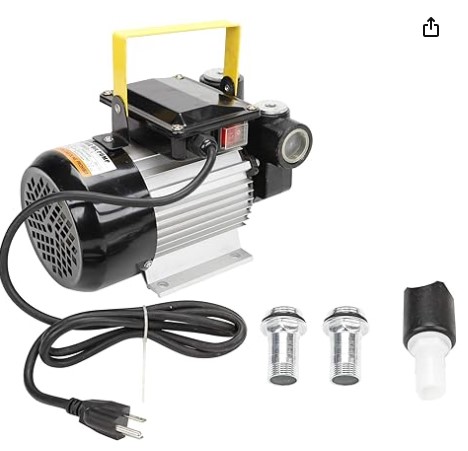
Features
- Speed Range: The pump operates at a speed of 2800 revolutions per minute (r/m), providing a quick and efficient oil transfer process.
- Flow Rate: With a flow rate of 20-60 liters per minute (5.25-15.75 gallons per minute), this pump can handle fuel transfer tasks with speed and precision.
- Motor: The pump is equipped with a powerful 110V AC motor that boasts 550 Watts of energy, ensuring a reliable and consistent performance.
- Self-Priming: The self-priming feature allows for easy operation, eliminating the need for manual priming and making the pump user-friendly.
- Versatility: Designed for pumping light oils, this pump is suitable for a variety of applications, making it a versatile solution for different fuel-powered equipment.
Compatibility: Works with various light oils, but NOT suitable for gasoline or other highly flammable fuels.
Pros
- Powerful flow rate for quick transfers
- Self-priming for effortless operation
- Durable construction for long life
- Convenient features like hose and nozzle
- Versatile for various applications
Cons
- Not for gasoline or highly flammable fuels
- May be noisy for some users
3. VEVOR Diesel Fuel Transfer Pump Kit
This portable and easy-to-use diesel fuel transfer pump kit is perfect for transferring diesel, kerosene, engine oil, and other compatible fluids. It features a self-priming design for quick and easy operation. The kit also includes a 10 GPM pump, hoses, and a filter to keep your fuel clean.
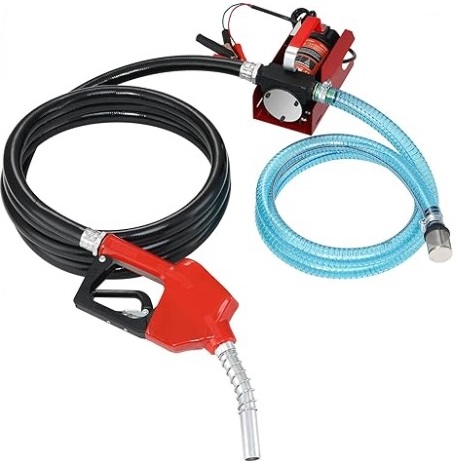
Features
- High-Speed Performance: The 3300 RPM motor delivers a swift 10 GPM flow rate, enabling rapid refueling with a 9.8 ft suction and 26.2 ft lift.
- Durable Construction: Made with cast iron and aluminum alloy, this diesel pump is robust and enduring, ensuring reliable performance even in challenging outdoor environments.
- Extended Operation: The internal alloy impeller and high-torque motor allow for up to 30 minutes of non-stop operation, providing efficient and consistent fuel transfer.
- Nozzle Magic: The kit includes an automatic shut-off fuel nozzle, making refueling a hands-free experience. The nozzle stops automatically when the tank is full, eliminating the need for constant monitoring.
- All-Inclusive Kit: In addition to the diesel transfer pump, the kit includes a 13 ft rubber outlet hose, a 6.6 ft PVC inlet hose, and an automatic shut-off fuel nozzle.
Compatible With
- Diesel
- Kerosene
- Transformer Oil
Pros
- Efficient and high-speed fuel transfer with a 10 GPM flow rate.
- Durable construction with cast iron and aluminum alloy for wear and corrosion resistance.
- Extended 30-minute non-stop operation for reliable fuel transfer.
- Hands-free refueling with the automatic shut-off fuel nozzle.
- All-inclusive kit with hoses and nozzle for convenience.
- Portable design for versatile use on different oil barrels and tanks.
Cons
- Not compatible with gasoline, machine oil, or other liquids.
4. PRUNkuar 110V AC Automatic Gasoline Fuel Transfer Pump
It features a powerful motor that can pump up to 3.7 gallons per minute. The pump also includes a built-in bypass valve that prevents overheating, and a thermal protection switch that automatically shuts off the pump if it gets too hot.
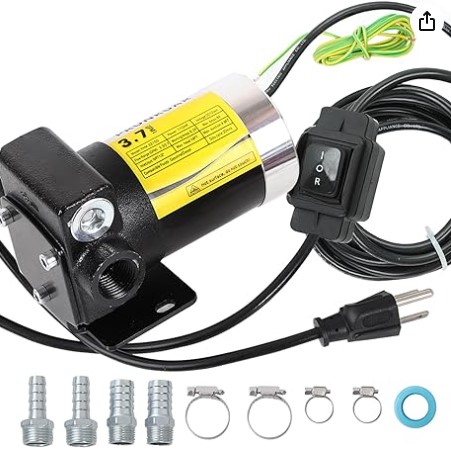
Features
- Flow Range: The pump offers a versatile flow range of 2.3/3.7 gallons per minute (GPM), providing efficient fuel transfer for various needs.
- Dual Direction Pumping: Unlike other oil pumps, this model allows precise control with forward and reverse pumping capabilities, thanks to its specialized button control system.
- Portable and Space-Saving: Compact design and lightweight construction make it easy to transport and store.
- Precise Control: Sensitive switch for precise control, ensuring efficient and accurate liquid transfer.
- Durable Construction: High-quality all-through clamps and a sealed pump chamber contribute to a reliable and durable pump.
- Safety First: Safety is paramount. This pump prioritizes your well-being with its upgraded explosion-proof design and components, eliminating the risk of sparks. The heavy-duty cast iron pump chamber, thermal protection with automatic shut-off, and a built-in 3-minute bypass ensure stable, safe, and efficient operation.
Technical Specifications:
- Flow Range (GPM):
- Adjustable from 2.3 to 3.7 GPM
- Offers a precise and customizable flow rate, catering to specific fueling requirements with flexibility.
- Working Amps:
- 0.6A
- Low working amperage ensures energy-efficient operation, contributing to cost savings.
- Max Amps:
- 0.8A
- The pump’s maximum amperage remains within an efficient range, balancing performance with power consumption.
- Voltage:
- 110V AC
- Operates seamlessly on standard alternating current, providing a reliable power source for consistent performance.
- Power:
- 1/10HP
- The pump’s 1/10 horsepower rating signifies a balance between power and efficiency, suitable for various fuel transfer applications.
- Inlet/Outlet:
- NPT 1/2″
- The 1/2″ NPT inlet/outlet ensures compatibility with standard fittings, simplifying installation and integration into existing fuel systems.
- Max. Head:
- 19FT
- With a maximum head of 19 feet, the pump can efficiently lift fuel to higher levels, accommodating installations where elevation is a factor.
- Max. Suction:
- 4.9FT
- The pump’s maximum suction depth of 4.9 feet allows for flexible placement, ensuring efficient fuel retrieval from various storage setups.
Compatible with
- Gasoline
- Diesel
- Kerosene
Pros
- Easy to use
- Fast transfer
- Safe and reliable
- Portable and lightweight
- Versatile
Cons
- Requires a 110V AC power source
Overall, this 110v AC automatic gasoline fuel transfer pump offers a compelling combination of convenience, safety, and versatility, making it a valuable asset for various fuel transfer applications.
Read More About A Buyer’s Guide To The Best CCV Filters 6.7 Cummins
110v Fuel Transfer Pump buying guide
Choosing the Right 110v Fuel Transfer Pump: A Comprehensive Buying Guide
Fuel transfer pumps powered by a standard 110v AC outlet offer a convenient and efficient solution for various needs. Whether you’re refilling your car or managing fuel supplies, selecting the right pump requires careful consideration. This guide equips you with the knowledge to navigate the key factors and find the perfect pump for your specific requirements.
1. Flow Rate: This refers to the amount of fuel the pump can transfer per unit of time, typically measured in gallons per minute (GPM). Here’s a general guideline:
- Low flow rate (10-30 GPM): Suitable for small vehicles like cars, motorcycles, and ATVs.
- Medium flow rate (30-50 GPM): Ideal for larger vehicles like vans, trucks, and tractors.
- High flow rate (50+ GPM): Best for rapid filling of large tanks or industrial applications.
2. Fuel Compatibility: Ensure the pump is compatible with the type of fuel you intend to transfer. Common options include gasoline, diesel, kerosene, and biodiesel. Some pumps have specific certifications depending on the fuel type.
3. Safety Features: Prioritize safety by opting for a pump with features like:
- Explosion-proof design: Minimizes the risk of sparks in flammable environments.
- Thermal protection: Automatically shuts off the pump if it overheats.
- Bypass valve: Releases pressure if necessary.
- Grounding wire: Reduces the risk of electrical shock.
4. Portability: Consider how often you’ll need to move the pump. Look for features like:
- Compact size for easy storage and transportation.
- Lightweight construction for effortless handling.
- Carrying handle for added convenience.
5. Additional Features: Some pumps offer additional features like:
- Automatic shut-off: Stops the pump when the tank is full, preventing spills.
- Self-priming: Eliminates the need for manual priming.
- Metering functionality: Tracks the amount of fuel transferred.
- Hose length and material: Choose a hose length and material suitable for your application.
DIY Fuel Transfer Pump
1. Prepare the Motor Mount: Attach the 12V DC electric motor to a stable surface, securing it with screws or brackets.
2. Create the Pumping Mechanism: Attach a non-corrosive pump head or impeller to the motor shaft. This will create the suction needed to move the fuel. Connect the pump head to the PVC pipe or metal tubing.
3. Assemble the Inlet and Outlet: Connect the inlet end to the fuel source using the automotive fuel hose. Use hose clamps to secure the connection.
4. Install a Switch: Wire a switch to control the power supply to the motor. This allows you to turn the pump on and off as needed.
5. Power Source: Connect the pump to a 12V DC power source, such as a car battery. Ensure the wiring is secure and follows safety guidelines.
6. Testing: Before using the pump with a large amount of fuel, test it with a small amount to ensure proper functionality.
What Is A Fuel Transfer Pump?
A fuel transfer pump is a device used to move fuel from one container to another. They are commonly used to transfer fuel from storage tanks to vehicles, generators, or other machinery.
There are two main types of fuel transfer pumps: positive displacement pumps and centrifugal pumps. Positive displacement pumps use a fixed volume of fluid to transfer fuel, while centrifugal pumps use a rotating impeller to create a pressure difference that moves the fuel.
Read Also 4 Best Crankcase Filter For 6.7L Cummins Engine For Performance
What Does A Fuel Transfer Pump Do?
A fuel transfer pump acts as a muscle for moving fuel from one container to another, like a pump for your car’s gas tank on a larger scale. It can be powered by electricity, gasoline, or diesel.
Here’s a breakdown of their functions:
- Creating suction: The pump generates a vacuum that pulls the fuel from its source container.
- Forcing movement: The pump then uses this vacuum and internal mechanisms to push the fuel through a hose or pipe towards the desired destination.
- Dispensing control: Many pumps come equipped with nozzles and switches, allowing for controlled dispensing of the fuel.
It essentially uses positive displacement or centrifugal mechanisms to efficiently move fuel at varying rates depending on your needs.
How Does A Fuel Transfer Pump Work
The pump creates a vacuum at the inlet, drawing fuel from the source container. This vacuum is generated by the pump mechanism, either through positive displacement or centrifugal force.
The drawn fuel is then directed through the pump housing and out the discharge hose. One-way valves ensure proper flow direction and prevent backflow.
The pump creates pressure to overcome friction in the hose and deliver the fuel to the desired location. The required pressure depends on the distance and height the fuel needs to be transferred.
How To Use A Fuel Transfer Pump
Here’s a general guide:
- Step 1: Turn on the pump
- Step 2: Observe the fuel flow and ensure there are no leaks or spills.
- Sep 3: Control the flow rate
- Step 4: Stop the pump before overflow
- Step 5: Turn off the pump
- Step 6: Remove the hoses from both the pump and the containers, ensuring they are drained properly.
- Step 7: Store the pump and hoses
- Step 8: Dispose of used fuel properly
Can You Use A Transfer Pump For Gasoline?
Yes, specific transfer pumps are designed for gasoline, but use caution. Never use unrated pumps or methods, as gasoline is highly flammable and poses serious risks.
What Is The Biggest Difference Between A Mechanical Fuel Pump And Electric Fuel Pump?
The biggest difference lies in power source. Mechanical pumps rely on the engine’s movement, while electric pumps use a motor and battery/electricity.
What Are The Disadvantages Of Electric Fuel Pump?
While convenient, electric fuel pumps have some drawbacks:
- Higher cost: Can be more expensive than mechanical pumps.
- Increased complexity: Wiring and potential electronic issues add complexity.
- Power dependence: Requires a reliable power source, limiting use in remote areas.
- Heat sensitivity: Overheating can damage the pump, requiring proper cooling.
- Limited flow: May not be suitable for high-performance applications needing high flow rates.
Read Also Protect Your Engine: Best 6.7L Powerstroke Crankcase Filters
How Do I Choose An Electric Fuel Pump?
Here are the key factors to consider when making your selection:
1. Horsepower
Your engine’s horsepower (hp) determines how much fuel flow is required to support it. Higher horsepower engines demand more fuel, so you’ll need a pump with a higher flow rate.
2. Fuel System
Consider whether you have a carbureted or fuel-injected system. Fuel-injected systems typically require higher fuel pressure and flow than carbureted systems.
3. In-Tank vs. Inline Pumps
In-tank pumps are submerged in the fuel tank, benefiting from cooler temperatures and quieter operation. Inline pumps are mounted outside the tank, offering easier access for maintenance but potentially running hotter.
4. Pump Design
Different pump designs, such as gerotor, vane, or roller, offer varying flow rates, pressure capabilities, and noise levels. Choose a design that suits your specific needs.
5. Fuel Pressure
Ensure the pump matches your vehicle’s required fuel pressure for optimal performance and component protection.
FAQs
What type of pump would be best suited for fuel transfer use?
For fuel transfer, a rotary vane pump or a diaphragm pump is commonly used. These pumps are efficient, reliable, and suitable for handling various types of fuels.
What is the best fuel pump?
The Universal Electric Fuel Pump Kit by JUMBOWIDE is a reputable option known for its compatibility with a wide range of vehicles and reliable performance.
Which fuel pump is more efficient?
Electric pumps are generally more efficient than mechanical ones due to their consistent flow and lower energy consumption, but efficiency still depends on specific pump design and application.
Which is better mechanical or electric fuel pump?
It depends! Electric offers higher pressure & flow for performance, while mechanical is simpler & cheaper for stock applications. Consider your engine needs and budget.
What are the disadvantages of electric fuel pump?
Disadvantages of electric fuel pumps include potential reliability issues, higher cost compared to mechanical pumps, susceptibility to electrical failures, and increased complexity in the vehicle’s fuel system.
Can I replace mechanical fuel pump with electric?
Replacing a mechanical pump with electric is possible, but depends on your engine and needs. Consider factors like engine power, fuel system, and desired performance gains.
What is the advantage of electronic fuel pump?
Electronic fuel pumps offer precise control, improved fuel efficiency, lower emissions, and reduced vapor lock compared to mechanical pumps.
Do electric fuel pumps get weak?
Yes, electric fuel pumps can weaken over time due to wear, heat, or debris. This leads to reduced fuel pressure and various performance issues.
How long do mechanical fuel pumps last?
Mechanical fuel pumps can last a surprisingly long time, often exceeding 100,000 miles or even decades! They typically fail gradually, leaking before complete breakdown.
Are electric fuel pumps reliable?
Electric fuel pumps are generally considered reliable, offering consistent performance and quieter operation than mechanical pumps.

Conclusion
This the end of our list of the best 110v fuel transfer pump. Consider factors like flow rate, compatibility, portability, and safety features. Remember, the “best” pump depends on your specific needs and priorities.
